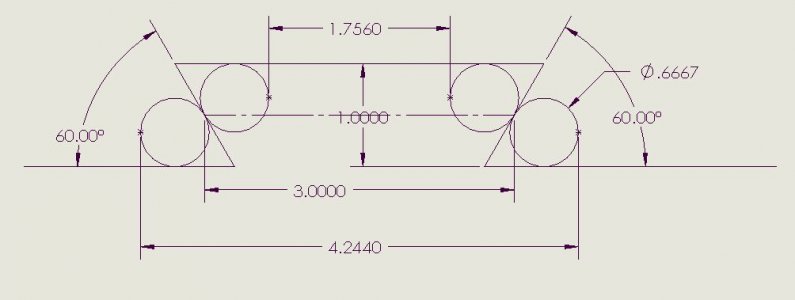- Joined
- Jan 4, 2021
- Messages
- 2,940
Still need two identical pins, and if you want to use "correct" diameter pins, you need two full sets (of two ranges to cover "short" & "tall" dovetails, so four sets instead of two). I think you'll find that many hobbyists only have partial sets or none at all and rely on dowel pins for their needs.I assumed that only one part would be measured at a time so just one pair would work.
The method I would choose for the female dovetail would be to wedge a pair of tapered parallels between the pins but measure over the protruding pins and not the tapered parallels.
For the male dovetail I would use a small clamp over the pins and measure over the pins.
If the two dimensions are the same, then the dovetails are the same, but only if the correct diameter pins are used.
I would rather spend the money on a 2-D CAD package which will have more usage than even one set of Gage Pins.

